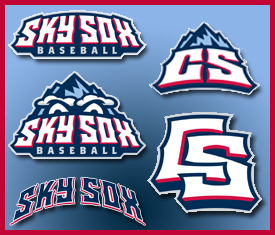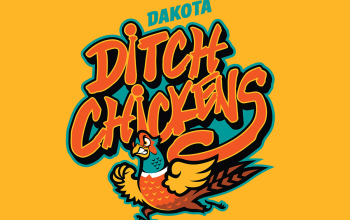The majestic Pikes Peak, one of 53 mountains in the state of Colorado that ascend above 14,000 feet, was named for Zebulon Pike, who led an 1806 expedition to the base of the mountain. The mountain has been called a lot of names, including the Arapaho “Heey-otoyoo” (Long Mountain), El Capitán (by Spanish explorers in the 1700s), Highest Peak (by Zebulon Pike himself), James Peak (after Edwin James, the first American to actually summit the mountain), Pike’s Peak (by people who appreciate proper grammar), and Pikes Peak (by the apostrophe-hating US Board on Geographic Names in 1890). For the record, as a resident of Colorado, I would like the name officially changed to Zebulon’s Peak, because Zebulon is kind of an awesome name.
At 14,114 feet, Pikes Peak is not the tallest mountain in Colorado—in fact, it’s only the 20th tallest in the whole state—but it’s the only fourteener for roughly 50 miles in any direction, so its height is accentuated. The mountain is one of the main attractions to nearby Colorado Springs, Colorado’s second-biggest city.
Colorado Springs is also home to another attraction, the Colorado Springs Sky Sox, newly minted Triple-A affiliate of the Milwaukee Brewers. The current version of the Sky Sox debuted in 1988 as an affiliate of the Cleveland Indians, then partnered with the nearby Colorado Rockies from 1993 to 2014. However, their name derives from a Major League team that this particular franchise has never been affiliated with.

The first Sky Sox franchise played in a tiny Single-A league that existed for about a decade after World War II, and their name was an homage to their parent club.
“Our name came about because of the affiliation with the White Sox back in the ’50s in the earliest iteration of the Sky Sox here in Colorado Springs,” said Nick Debroff, the team’s director of public relations. “That team was part of the old Western League from 1950 to 1958.”
The good news is that those Sky Sox won the Western League championship in the league’s final season in 1958 (and are the league’s reigning champions for all eternity). The bad news is that the team drew only 61,000 fans for the entire season that year. The city would go three decades before being home to a baseball team again, and when they did, the new franchise reprised the name of the city’s former team.
“When that league folded, there was no baseball in Colorado Springs until 1988,” Debroff said. “When they brought the team back, they used the same name that had been used with that White Sox affiliate.”
So that’s where the Sox part of the name comes from. But most baseball teams who adopt the archaic pluralization of “Socks” amend it with a color—be it Red, White, Blue, or Aqua. So where do the Sky Sox come from?
“The Sky is really just sort of a nod to being at the highest elevation of any ballpark in North America,” Debroff said.
To elaborate, the Sky Sox play in America’s highest-elevation professional baseball stadium, Security Service Field, which sits at 6,531 feet. So think about all of the problems that the Colorado Rockies deal with—batted balls that fly about 10 percent farther than at sea level, pitched balls that won’t break or slide because of the lack of friction in the thin air, and baseballs that actually shrink and lose weight unless they’re stored in a humidor. Then add about 1,000 feet to Denver’s elevation and you’ll see why Colorado Springs is the poster child for why the Pacific Coast League has a reputation as a hitter’s league.

The original identity of this new Sky Sox franchise featured green script with Pikes Peak and the city’s skyline illustrated in an underlining swash.
Fans were reacquainted with this identity this season when the team gave out bobblehead likenesses of Craig Counsell, who wore the Sky Sox green and interlocking CS from 1995 to 1997, and who was named manager of the Brewers, the team’s parent club, earlier this season.
The Sky Sox updated their look in 2009, abandoning the green script in favor of an ominous mountain, presumably Zebulon’s—er, Pikes Peak—with a glowering expression complete with cloud eyebrows. Part of the inspiration for the new look can be found in Colorado Springs’ culture itself—the top four employers in the city are Fort Carson, Peterson Air Force Base, Schriever Air Force Base, and the US Air Force Academy.
 “The reason for the rebrand was to put a fresh new spin on the Sky Sox logo,” Debroff said. “Because of the military presence in Colorado Springs, red, white, and blue was a natural color scheme to move to.”
“The reason for the rebrand was to put a fresh new spin on the Sky Sox logo,” Debroff said. “Because of the military presence in Colorado Springs, red, white, and blue was a natural color scheme to move to.”
The new logos, designed by Dan Simon of Studio Simon, don’t just feature red, white, and blue, but also sky blue, a wink and a nod to the team’s name and to Colorado’s frequent sunny weather. The logo set includes an interlocking CS, which the team features prominently on its cap and in its merchandise, and an alternate Pikes Peak without the eyes.
The Sky Sox play in a state where baseball fans loudly cheer the line “From the mountains…” in God Bless America, and that hosts the Mountain Time Zone’s only Major League team. (We don’t count the Diamondbacks because Arizona doesn’t observe daylight savings time, so they’re aligned with the Pacific Time Zone during baseball season.) The Sky Sox name has its roots in a parent club-affiliate relationship that ended almost 60 years ago, but with a visual identity that embrace Pikes Peak as its centerpiece, the name still fits.
















